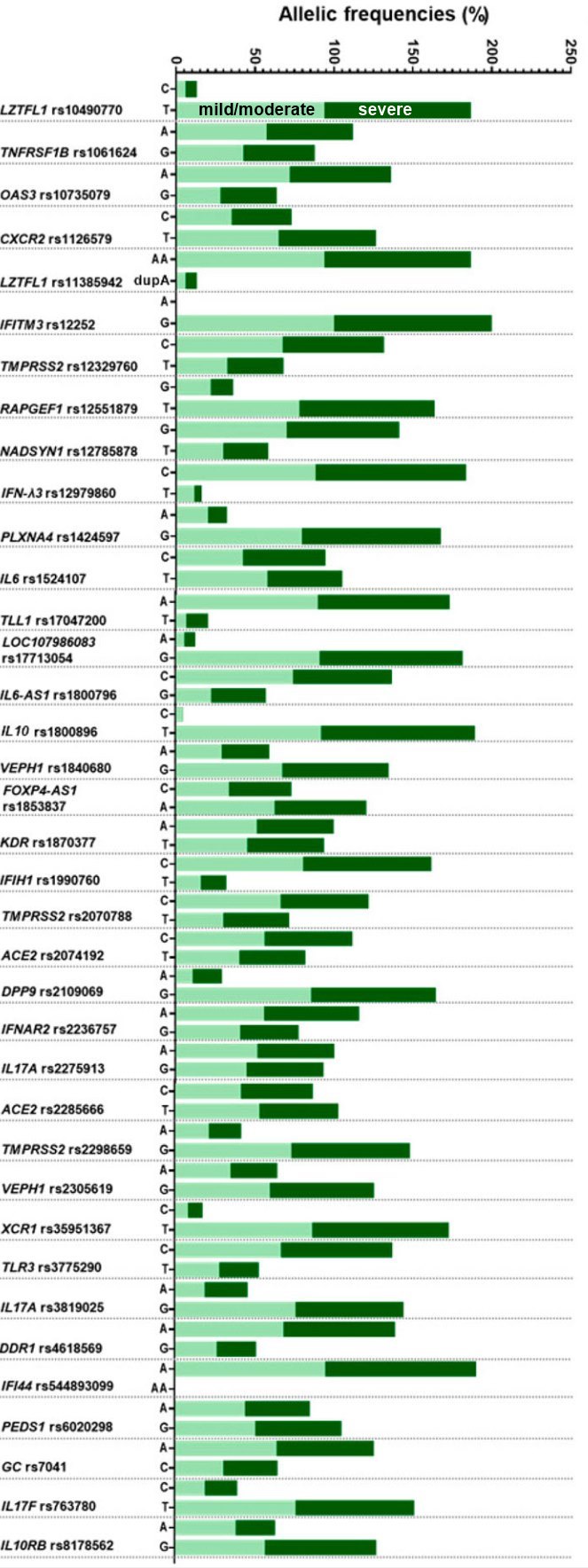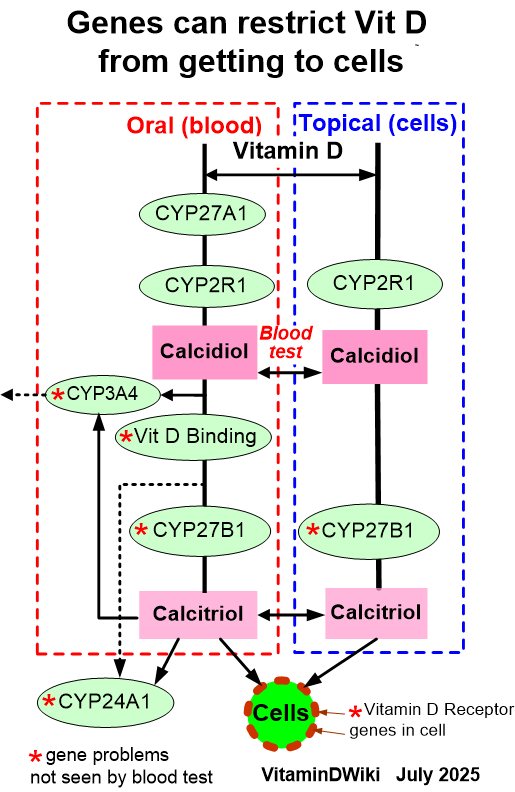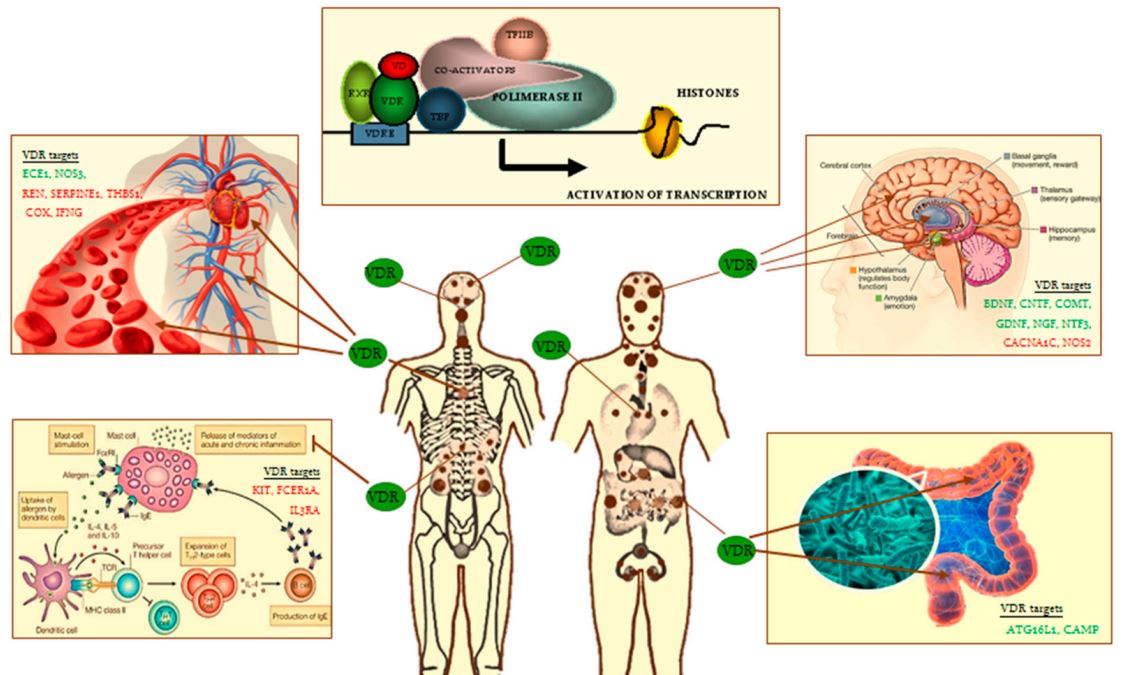COVID-19 5X worse if poor Vitamin D gene (CYP2R1)
Association of Vitamin D, Zinc and Selenium Related Genetic Variants With COVID-19 Disease Severity
Front Nutr. 2021 Jun 4;8:689419. doi: 10.3389/fnut.2021.689419. eCollection 2021. DOI: 10.3389/fnut.2021.689419
Nikola Kotur 1, Anita Skakic 1, Kristel Klaassen 1, Vladimir Gasic 1, Branka Zukic 1, Vesna Skodric-Trifunovic 2 3, Mihailo Stjepanovic 2 3, Zorica Zivkovic 4 5, Olivera Ostojic 4, Goran Stevanovic 3 6, Lidija Lavadinovic 6, Sonja Pavlovic 1, Biljana Stankovic 1
Statistically significant portion of table for adults

73 adults in Serbia

 1. Vitamin D pages containing "CYP2R1" in title{LIST()} 1. Vitamin D pages containing "DHCR7" in title{LIST()} 1. Items in both categories Virus and Genetics:{category} 1. Items in both categories Virus and Vitamin D Receptor:{category}Wonder why this study did not find an association between VDR genes and COVID-19
1. Vitamin D pages containing "CYP2R1" in title{LIST()} 1. Vitamin D pages containing "DHCR7" in title{LIST()} 1. Items in both categories Virus and Genetics:{category} 1. Items in both categories Virus and Vitamin D Receptor:{category}Wonder why this study did not find an association between VDR genes and COVID-19📄 Download the PDF from Vitamin D Life
Background: COVID-19 pandemic has proved to be an unrelenting health threat for more than a year now. The emerging amount of data indicates that vitamin D, zinc and selenium could be important for clinical presentation of COVID-19. Here, we investigated association of genetic variants related to the altered level and bioavailability of vitamin D, zinc and selenium with clinical severity of COVID-19.
Methods: We analyzed variants in genes significant for the status of vitamin D (DHCR7/NADSYN1 rs12785878, GC rs2282679, CYP2R1 rs10741657, and VDR rs2228570), zinc (PPCDC rs2120019) and selenium (DMGDH rs17823744) in 120 Serbian adult and pediatric COVID-19 patients using allelic discrimination. Furthermore, we carried out comparative population genetic analysis among European and other worldwide populations to investigate variation in allelic frequencies of selected variants.
Results: Study showed that DHCR7/NADSYN rs12785878 and CYP2R1 rs10741657 variants were associated with severe COVID-19 in adults (p = 0.03, p = 0.017, respectively); carriers of DHCR7/NADSYN TG+GG and CYP2R1 GG genotypes had 0.21 and 5.9 the odds for developing severe disease, OR 0.21 (0.05-0.9) and OR 5.9 (1.4-25.2), respectively.
There were no associations between selected genetic variants and disease severity in pediatric patients. Comparative population genetic analysis revealed that Serbian population had the lowest frequency of CYP2R1 rs10741657 G allele compared to other non-Finish Europeans (0.58 compared to 0.69 and 0.66 in Spanish and Italian population, respectively), suggesting that other populations should also investigate the relationship of CYP2R1 variant and the COVID-19 disease course.
Conclusion: The results of the study indicated that vitamin D related genetic variants were implicated in severe COVID-19 in adults. This could direct prevention strategies based on population specific nutrigenetic profiles.
Vitamin D gene activation varies around the world

Seem that areas with darker skins have genes that are more efficient at converting UVB from sun into Vitamin D

SRB, Serbian;
CEU, Utah residents with Northern and Western European ancestry (1KGP);
GBR, British in England and Scotland (1KGP);
TSI, Tuscany in Italy (1KGP);
IBS, Iberian populations in Spain (1KGP);
FIN-Finnish European (gnomAD);
NFE-non-Finnish European, including Northwestern European, Bulgarian,
Estonian, Swedish, Southern European, and Other non-Finnish European (gnomAD);
AFR, African (gnomAD);
EA, East Asian (gnomAD);
SA, South Asian (gnomAD);
LAT, Latino/Admixed American (gnomAD);
ASJ, Ashkenazi Jewish (gnomAD).
